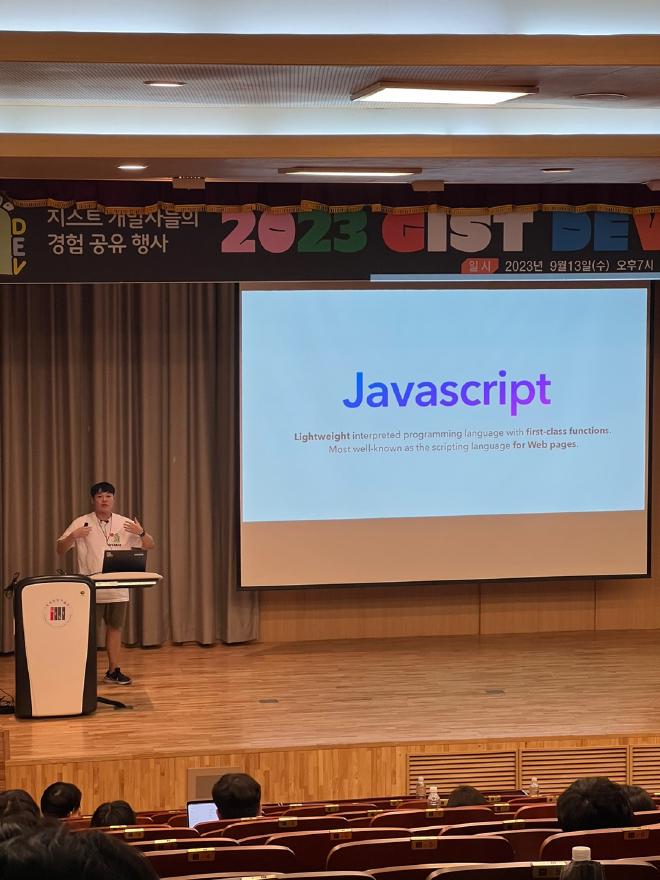GIST DEV NIGHT 2023

Table of Contents
Download Material (Polyglot_Developer.pdf)
Introduction #
As a current undergraduate majoring in Computer Science at GIST, I’ve always felt quite of shame that our major courses primarily focus on just Python and C. With the emergence of modern programming languages like Rust, Golang, and Zig, it sometimes feels like our curriculum is trapped somewhere. Today, I’d like to delve into the concept of a “polyglot developer” and share why I firmly believe that having experience with multiple languages can be a significant advantage in the world of programming and development.
What is a Polyglot Developer? #
A polyglot developer is, quite literally, a developer who is proficient in multiple programming languages. It’s not just about knowing the syntax but understanding the nuances, strengths, and weaknesses of each language. This allows them to choose the best tool for each task, depending on the project’s requirements.
The Advantages of Being a Polyglot Developer #
- Diverse Problem-Solving Skills: By understanding multiple languages, a developer can approach problems from various angles, leading to more innovative and efficient solutions.
- Adaptability: While transitioning from one language to two might be challenging, once you’re proficient in four languages, picking up a fifth or even a sixth becomes significantly easier. This adaptability isn’t just limited to languages but extends to new frameworks and technologies as well.
- Staying Relevant: The tech industry is ever-evolving. By being a polyglot developer, you ensure that you remain relevant and in demand, as you can quickly adapt to the industry’s changing needs.
My Journey and Approach to Learning New Languages #
Whenever I decide to explore a new language, I follow a specific process:
- Understand the Basics: Before diving deep, should grasp the basic syntax and structure of the language. And most importantly, need to know the purpose of this language.
- Find the Weakness: Every language has its strengths and weaknesses. I try to identify the weaknesses of the new language and understand how they can be mitigated.
- Comparative Analysis: I like to compare the new language with those I’m already familiar with, like Python and JavaScript. This helps in drawing parallels and understanding the unique features of the new language.
- Real-world Projects: I believe in learning by doing. So, I often take up small projects or challenges in the new language. This not only helps in understanding the language better but also in identifying its strengths and weaknesses.
For instance, when exploring Rust and Golang, I delved into their memory safety features and concurrency models, respectively. By comparing them with Python and JavaScript, I could appreciate the unique advantages they brought to the table.
Conclusion #
Being a polyglot developer isn’t just about adding more tools to your toolbox. It’s about understanding the world of programming in a more holistic manner and being prepared for the ever-evolving tech landscape. So, if you’re still wondering whether to embark on the journey of becoming a polyglot developer, I’d say, take the leap. The experiences and insights you’ll gain will be well worth the effort.